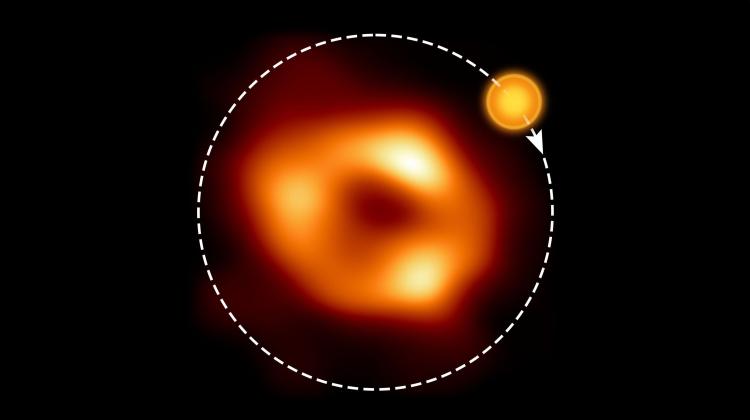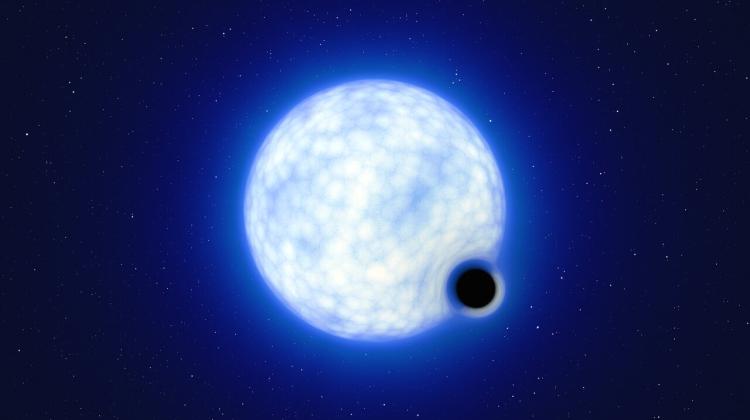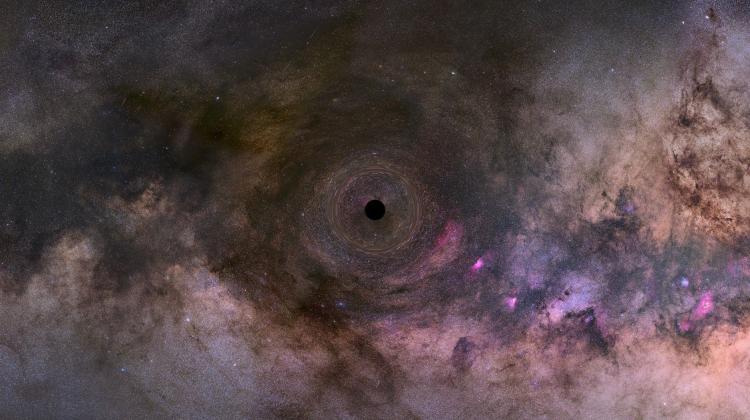Astronomers observed a black hole devour a super-Jupiter

A black hole in a distant galaxy about 47 million light-years away ripped apart a substellar object. The object was a small brown dwarf or a giant planet, according to observations made with participation of Polish astronomers.
The European Space Agency (ESA) reported the results of X-ray flash observations.
Research was conducted by Dr. Marek Nikołajuk of the University of Białystok, in collaboration with Prof. Roland Walter of the University of Geneva in Switzerland.
In 2011, researchers were studying one of the galaxies, when in the field of view they observed X-ray flash from another object. They identify the source as the galaxy NGC 4845, 47 million light-years from Earth. This galaxy has never been observed in the high energy range.
The first observations were carried out using the INTEGRAL satellite of the European Space Agency (ESA). To understand the nature of the phenomenon, the researchers carried out further observations using other instruments: the U.S. space observatories XMM-Newton and Swift, and the Japanese MAXI, operating on the International Space Station (ISS).
"NGC 4845 has brightened a thousand times, reaching peak brightness in January 2011, and then gradually faded. Observations were a complete surprise, as they involved the galaxy, which was calm for at least 20-30 years" - said Marek Nikołajuk, lead author of the publication, which will be published in Astronomy and Astrophysics.
Analysis allowed to estimate the mass of the black hole at 300,000 solar masses. X-ray flash was interpreted as a result of ripping apart an object that came close to a black hole. It had a mass between 14 and 30 Jupiter masses, which is definitely less than stellar mass.
In this range of masses of objects there is no clear boundary between large planets and brown dwarfs ("failed stars"). Researchers often set the limit at 13 Jupiter masses, but it is a matter of dispute, and more massive objects can be found in the planets directory.
"Analysis of the nature of the flash and the study of its evolution in time allowed us to reject such explanations as an unlikely supernova. The sudden and strong brightness had to be the result of something as violent, and energetically very powerful. The most likely explanation is ripping apart a massive planet or a tiny brown dwarf by the black hole forces in the galaxy NGC 4845" - Nikołajuk explained in an interview with PAP.
According to the researchers, two-three months before the flash a large planet (or a small brown dwarf) wandered too close to a black hole. Huge tidal forces torn the object apart, but not completely.
"About 10 percent outer layers were swallowed by the black hole, and the rest of the object, including the dense core of the planet, managed to escape the black hole. Materials from the torn super-Jupiter spiralled down into the black hole, heating up to a temperature of millions of degrees Celsius and shining in the X-ray range" - explained Nikołajuk.
Astronomers had observed the objects ripped apart by black holes before, but this was the first observation of the rupture of a low mass object. Also for the first time, the phenomenon was accompanied by the formation of hot plasma, which glowed in the high-energy X-ray range
"Until now, the observations indicated that low-energy X-ray radiation is common in such processes. This will have to be taken into account by theorists analysing such processes" - commented Nikołajuk.
If the object is a planet, the results of the Polish and Swiss astronomer will be a further indication of the existence of planets in galaxies other than the Milky Way.
PAP - Science and Scholarship in Poland
cza/ mrt/
tr. RL
Przed dodaniem komentarza prosimy o zapoznanie z Regulaminem forum serwisu Nauka w Polsce.


















